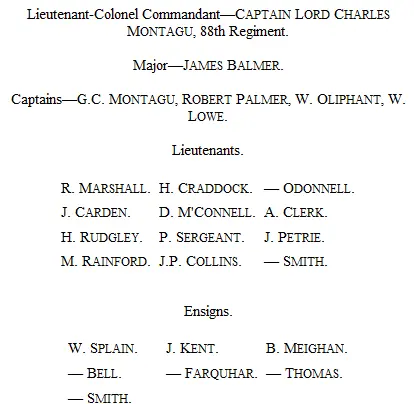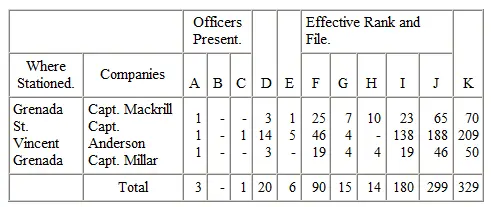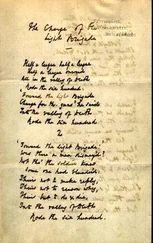Alfred Ellis - The History of the First West India Regiment
Здесь есть возможность читать онлайн «Alfred Ellis - The History of the First West India Regiment» — ознакомительный отрывок электронной книги совершенно бесплатно, а после прочтения отрывка купить полную версию. В некоторых случаях можно слушать аудио, скачать через торрент в формате fb2 и присутствует краткое содержание. Жанр: foreign_antique, foreign_prose, на английском языке. Описание произведения, (предисловие) а так же отзывы посетителей доступны на портале библиотеки ЛибКат.
- Название:The History of the First West India Regiment
- Автор:
- Жанр:
- Год:неизвестен
- ISBN:нет данных
- Рейтинг книги:3 / 5. Голосов: 1
-
Избранное:Добавить в избранное
- Отзывы:
-
Ваша оценка:
- 60
- 1
- 2
- 3
- 4
- 5
The History of the First West India Regiment: краткое содержание, описание и аннотация
Предлагаем к чтению аннотацию, описание, краткое содержание или предисловие (зависит от того, что написал сам автор книги «The History of the First West India Regiment»). Если вы не нашли необходимую информацию о книге — напишите в комментариях, мы постараемся отыскать её.
The History of the First West India Regiment — читать онлайн ознакомительный отрывок
Ниже представлен текст книги, разбитый по страницам. Система сохранения места последней прочитанной страницы, позволяет с удобством читать онлайн бесплатно книгу «The History of the First West India Regiment», без необходимости каждый раз заново искать на чём Вы остановились. Поставьте закладку, и сможете в любой момент перейти на страницу, на которой закончили чтение.
Интервал:
Закладка:
Eutaw Springs was the last engagement of importance in the southern provinces. The British soon retreated to a position on Charlestown Neck, and confined their operations to the defence of the posts in that vicinity; while in Georgia, the British force was concentrated at Savannah. The surrender of Lord Cornwallis at Yorktown, in October, 1781, and the subsequent peace negotiations, put an end to the hostilities in America.
Lieutenant-Colonel Tarleton says: "It is impossible to do justice to the spirit, patience, and invincible fortitude displayed by the commanders, officers, and soldiers during these dreadful campaigns in the Carolinas. They had not only to contend with men, and these by no means deficient in bravery and enterprise, but they encountered and surmounted difficulties and fatigues from the climate and the country, which would appear insuperable in theory and almost incredible in the relation. They displayed military and, we may add, moral virtues far above all praise. During renewed successions of forced marches, under the rage of a burning sun and in a climate at that season peculiarly inimical to man, they were frequently, when sinking under the most excessive fatigue, not only destitute of every comfort but almost of every necessary which seems essential to existence. During the greater part of the time they were totally destitute of bread, and the country afforded no vegetables for a substitute. Salt at length failed, and their only resources were water and the wild cattle which they found in the woods. About fifty men, in this last expedition, sunk under the vigour of their exertions and perished through mere fatigue."
At the cessation of hostilities, the South Carolina Regiment and the Loyal American Rangers were removed to Jamaica, and as they are shown in the Jamaica Almanack for 1782 as being then in the island, they presumably arrived there about December, 1781. The South Carolina Regiment was probably dismounted, as it is shown as being stationed at Fort Augusta in Kingston harbour. At this time, the reinforcing of the West India Islands by provincial corps was considered most important, and in a letter to Sir Guy Carleton we find the following: "The object of reinforcing those islands is so important, that His Majesty wishes to have it understood that every provincial corps embarking for the West Indies shall immediately be put upon the British Establishment." It was, probably, on some such understanding that the two corps above mentioned proceeded from South Carolina; but the promise, if made, was never fulfilled, and neither of the two ever appeared in any Army List. The following is the list of officers of the South Carolina Regiment given in the Jamaica Almanack:

The South Carolina Regiment remained in Jamaica until the general disbandment of the provincial corps in 1783. The lieutenant-colonel commandant was given an independent company, and the whites, both officers and men, were pacified with grants of land. The black troopers, however, were a source of difficulty. These troopers, some of whom were originally free, while some had been purchased by the British Government, were in those days of slavery something of a "white elephant" in a large slave-holding colony like Jamaica. The planters, fearful of the consequences of the example to their slaves of a free body of negroes who had served as soldiers, agitated for their removal from the island, but, on the other hand, no other island was willing to receive them. There is no trace of how the difficulty was finally settled, but in a letter, dated War Office, June 15th, 1783, signed R. Fitzpatrick, and addressed to Major-General Campbell, commanding in Jamaica, the receipt of his letter concerning the disbandment of the provincial troops in the island is acknowledged, and the removal of "the blacks of the South Carolina Regiment" to the Leeward command approved of.
Some time, then, in September, 1783, the black troopers were removed to the Leeward Islands, and in the "Monthly Return of His Majesty's Forces in the Leeward and Charibee Islands, under the command of Lieutenant-General Edward Mathew," we find them formed into a corps, with a body of black artificers, who had served in South Carolina at the sieges of Charlestown and Ninety-six, and thirty-three black pioneers who had been included in the surrender of Yorktown. The following is the state of this corps:
A. Captains.
B. 1st Lieutenants.
C. 2nd Lieutenants.
D. Sergeants Present.
E. Drummers and Trumpeters Present.
F. Present, fit for duty.
G. Sick in Quarters.
H. Sick in Hospital.
I. On Command.
J. Total.
K. Total of the Whole.

The officers of this corps were, according to Bryan Edwards, vol. i. p. 386, taken from the regular army, and the companies were commanded by lieutenants of regulars, having captains' rank. Artificers, it may be as well to observe, were sappers and miners. The Royal Engineers at about this date consisted of various companies of Artificers; later on they were called Sappers and Miners; and, finally, Royal Engineers.
CHAPTER IV.
THE EXPEDITION TO MARTINIQUE, 1793 – THE CAPTURE OF MARTINIQUE, ST. LUCIA, AND GUADALOUPE, 1794 – THE DEFENCE OF FORT MATILDA, 1794
In February, 1789, all three companies of the "Black Corps of Dragoons, Pioneers, and Artificers" were stationed in Grenada, and from that date until June, 1793, they are shown in every monthly return, with a strength varying from 279 to 268, and an increase of four first lieutenants.
In February, 1793, the news of the French declaration of war was received in the West Indies, and orders were soon after transmitted from England to the Commander-in-Chief in the Windward and Leeward Islands to attempt the reduction of the French islands. Tobago was taken on the 17th of April without much trouble, the majority of the planters in that island being English; and an attack on Martinique was next meditated. The whole of the British force in the West Indies was known and acknowledged to be inadequate to the reduction of that island; but such representations had been spread throughout the army, concerning the disaffection of the greater part of the inhabitants of all the French islands towards the Republican Government lately established, as to create a very general belief that the appearance of a British armament before the capital of Martinique would alone produce an immediate surrender. Major-General Bruce, on whom the chief command of the troops had devolved, was assured by a deputation from the principal planters of the island that "a body of 800 regular troops would be more than sufficient to overcome all possible resistance."
These representations induced Major-General Bruce, in conjunction with Admiral Gardner, to undertake an expedition; and the troops having been embarked at Grenada in the men-of-war, the armament arrived off Cape Navire, Martinique, 10 10 See map.
on the 11th of June, 1793. There the general met the officer commanding the French Royalists, and, as the latter proposed an attack upon the town of St. Pierre, the 21st Regiment was landed at Cape Navire on the 14th, and there posted, to enable the Royalists to concentrate in the neighbourhood of St. Pierre, where the remainder of the British force joined them on the 16th. "The British troops consisted of the Grenadiers, Light Infantry, and Marines from the fleet, with the Black Carolina Corps, amounting in all to about 1100 men." 11 11 Major-General Bruce's despatch.
The Royalists were said to number 800.
Интервал:
Закладка:
Похожие книги на «The History of the First West India Regiment»
Представляем Вашему вниманию похожие книги на «The History of the First West India Regiment» списком для выбора. Мы отобрали схожую по названию и смыслу литературу в надежде предоставить читателям больше вариантов отыскать новые, интересные, ещё непрочитанные произведения.
Обсуждение, отзывы о книге «The History of the First West India Regiment» и просто собственные мнения читателей. Оставьте ваши комментарии, напишите, что Вы думаете о произведении, его смысле или главных героях. Укажите что конкретно понравилось, а что нет, и почему Вы так считаете.












